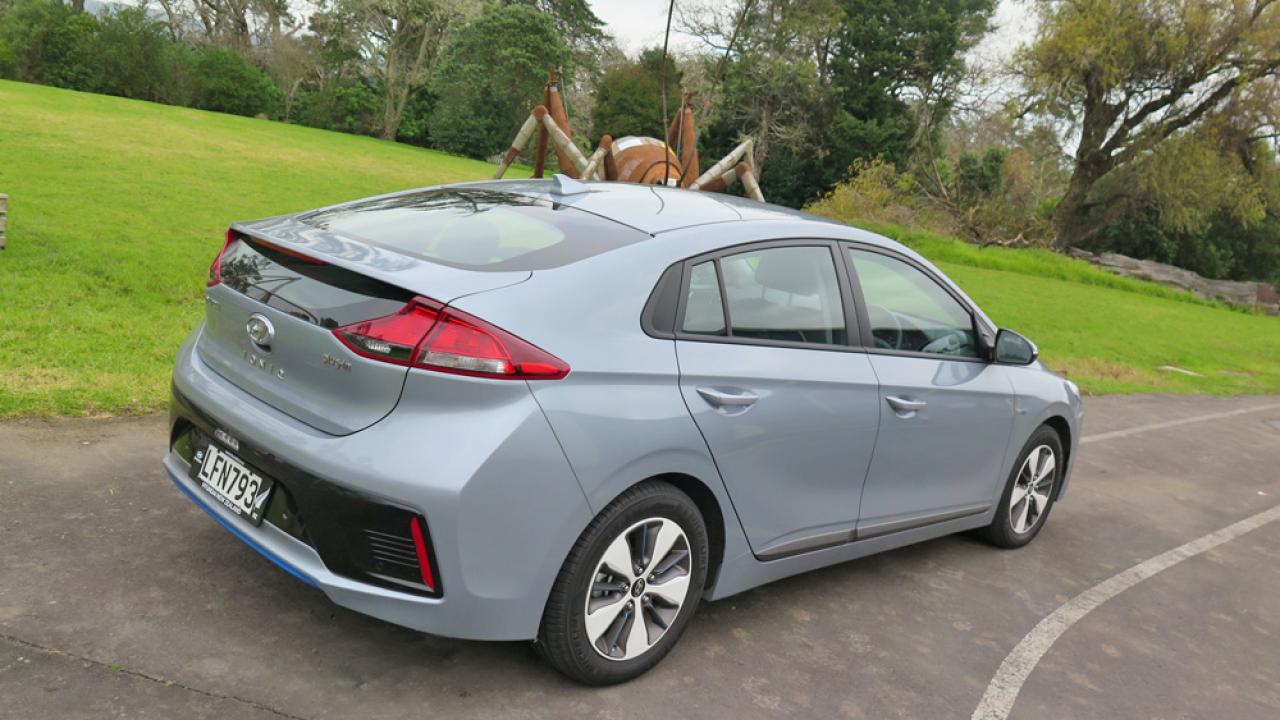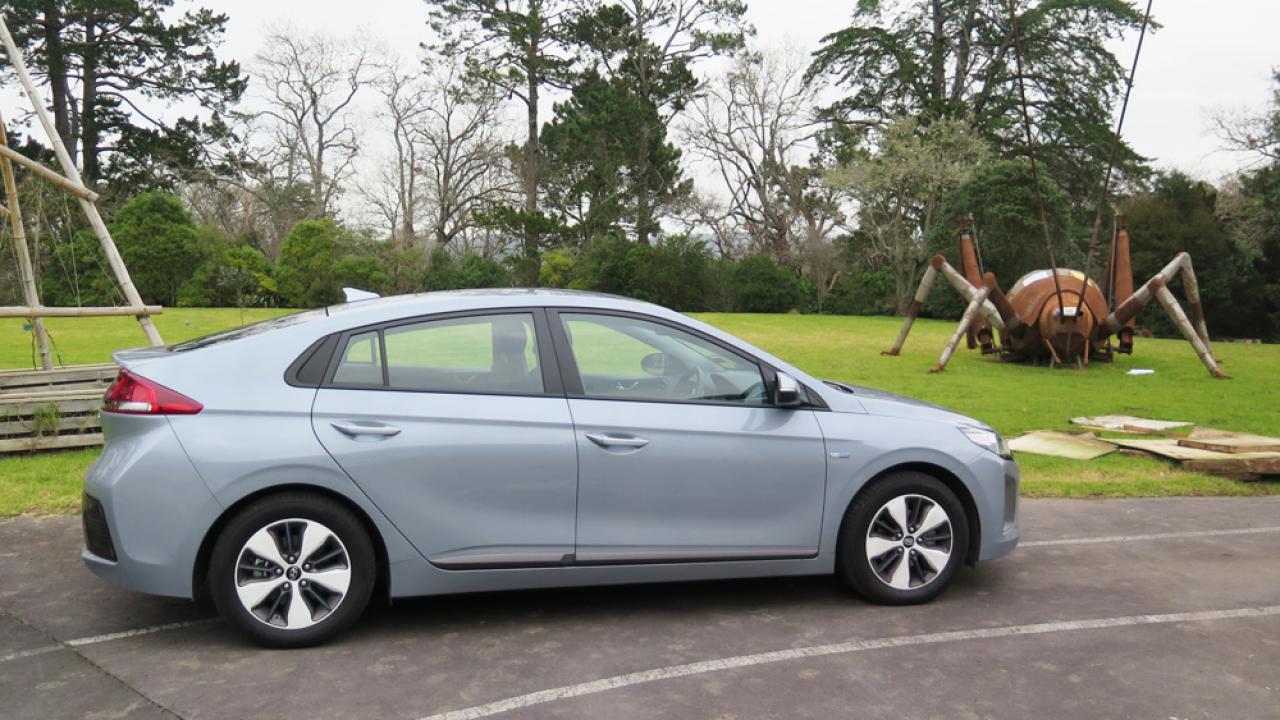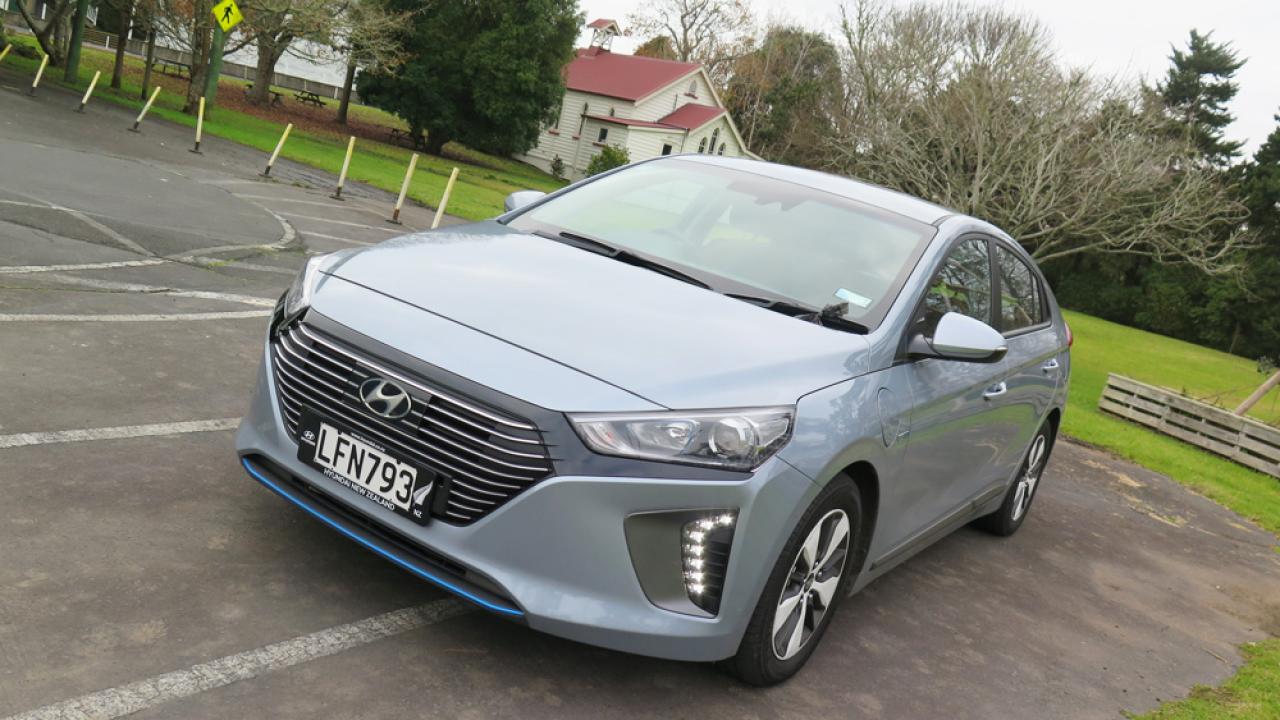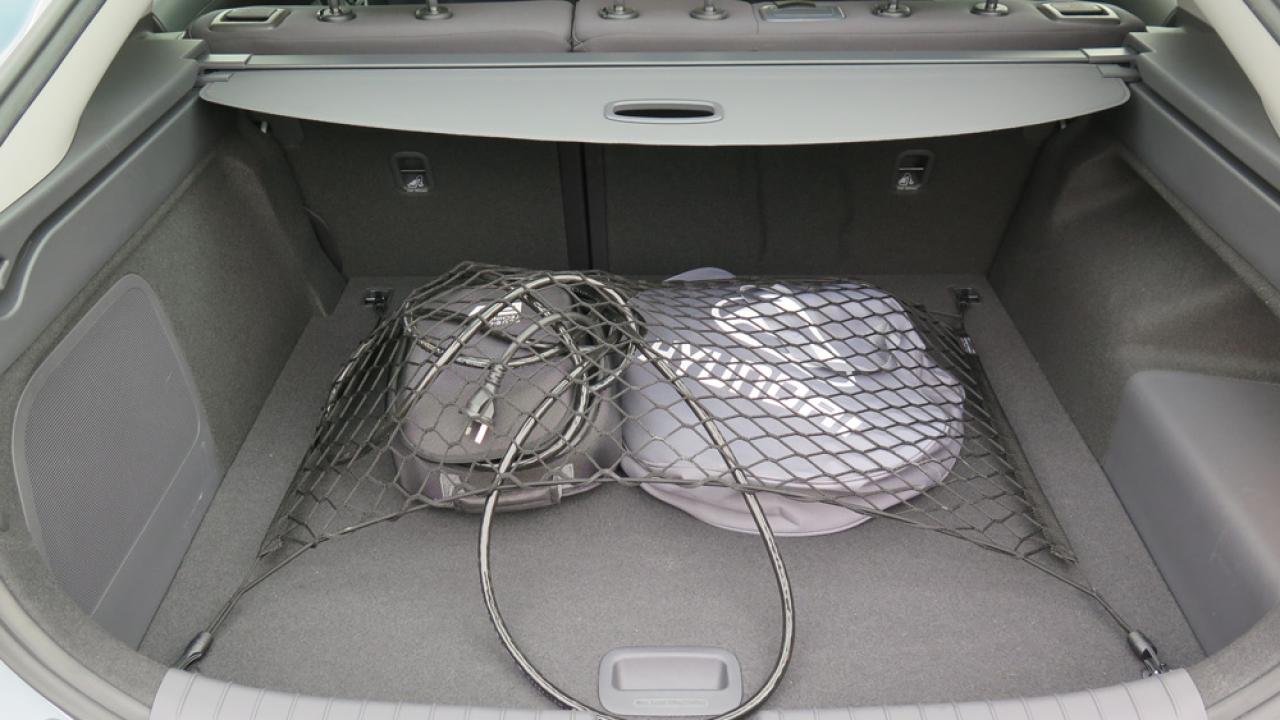One of this car’s strengths is its design – yes, there’s plenty of Hyundai swoopiness, but not to the extremes of some early electric cars: clearly there’s no longer a need for folk to swap powertrain compromises for ‘look at me’ showmanship.
But under that paint there’s plenty of showmanship going on. The bonnet and boot lids are aluminium to help cut weight, the underside is flat and smooth, extensive aero work has cut turbulence within the wheel arches, active flaps in the grille balance the need for cool air alongside low drag – and the result is a drag coefficient of 0.24 which, take it from us, is good.
The idea is to put as much power as possible into driving car’s wheels and operating the ancillaries, like air con and lights, and the minimum power into pushing that body through the air, hence Ioniq’s rather sporty profile.
To make the most of the plug-in system the battery needs a full charge before you drive, which means plugging into a suitable socket overnight – we used a standard household socket in our tester’s garage, and ensured the battery was full each morning. You can also fit a specialist charger to your house, for a quicker fill.
The Ioniq indicated a 50km range on pure electric. How far it will actually go depends on how and where you drive. Our tester’s hilly home isn’t helpful – the car regenerates less in hybrid mode downhill than it uses to climb uphill – but on a longer trip, with a higher proportion of city/highway and always keeping pace with traffic, this Ioniq travelled 52km on electric only before the petrol engine got a look-in, after which it was in hybrid mode – and it’s all automatic.
The result was a 2.5l/100km average fuel use over the course of our time with it, including a couple of longer and more challenging days using more petrol, with those balanced out by electric-only runs to the park, the office, and the local school. Most folk would never pay for petrol during the Monday to Friday commute, yet still wouldn’t have to worry about range at weekends or when on holiday.
And it’s holidays which introduce one compromise of owning a modern electric/plug-in car. Hybrid batteries are steadily getting smaller, but electric and plug-in cars use a more complex system and so require more room for batteries, cutting boot space.
This entry-level plug-in sits $6000 above the equivalent-spec hybrid and $1000 above the top-spec Elite hybrid, but costs $6000 less than the top-spec plug-in Elite - or the entry full-electric Ioniq.
All have a clear, easy-to-use layout, with easy-to reach power and USB sockets sat above a handy place for your cell phone. This test car featured the usual suite of safety aids, plus autonomous emergency braking, smart cruise control, tyre pressure monitoring, lane keep assist, lane departure warning, dusk-sensing headlights, a reversing camera, an eight-inch touch screen with Apple CarPlay and AndroidAuto, Bluetooth hands-free phone and audio streaming, steering wheel–mounted controls, and boot net and hooks.
As for fuel use, Hyundai claims 1.1l/100km. Our tester used no petrol at all during any run that equalled the average NZ commute or school run, but conducted several days of over 100km each across hilly terrain, and averaged 2.5l/100km overall.
Otherwise our quibbles were minor – the divided rear window may annoy some, and we’d have liked a whisker more storage up front than the two small cupholders, though the centre cubby is deep. Plus, not surprisingly, using hot air drains the battery fast and triggers petrol usage – a heated seat would be a less power-hungry alternative that’s not available to this car.
Very few electric or hybrid cars boast tow ratings, and this Ioniq is not rated for towing. But it is well thought-out for most folk, most of the time. It’ll seat five, the modesty of the 341-litre luggage space will only be a problem for single-car- family holidays, and during the average day it will use no petrol – especially good news whenever fuel costs rise – yet there’s no anxiety with range given it’ll also run as a hybrid.
The best of both worlds? Certainly until electric range increases. Meanwhile, Ioniq is good enough to hold its own among an increasingly numerous set of competitors.
At a glance |
|
|
Models |
Hyundai Ioniq Plug-in |
|
Engine |
1.6-litre petrol with plug-in hybrid electric drivetrain |
|
Price |
$53,990 |
|
ANCAP safety rating |
5 |
|
Power and Torque |
77kW at 5700rpm, 147Nm at 4000rpm (petrol), 44.5kW/170Nm (electric) |
|
Transmission |
Dual clutch auto |
|
Fuel economy |
1.1l/100km |
|
Towing capacity |
Not rated for towing |
|
2WD/4WD/AWD |
2WD |
|
Seating capacity |
5 |
|
Luggage capacity/payload |
341 litres |
Safety systems |
|
|
7 airbags |
Autonomous emergency braking |
|
Tyre pressure monitoring |
Lane keep assist |
|
Lane departure warning |
Auto headlights |
|
Reversing camera |
|






